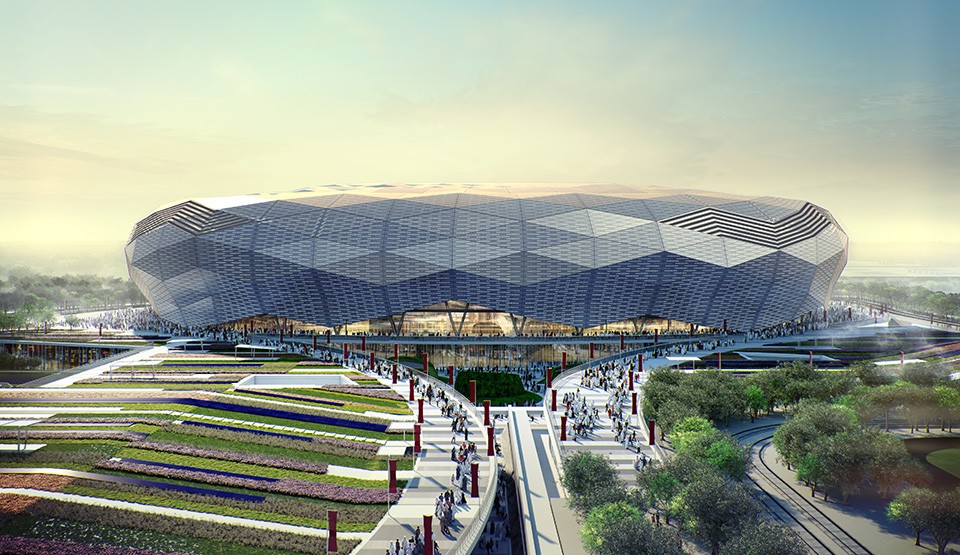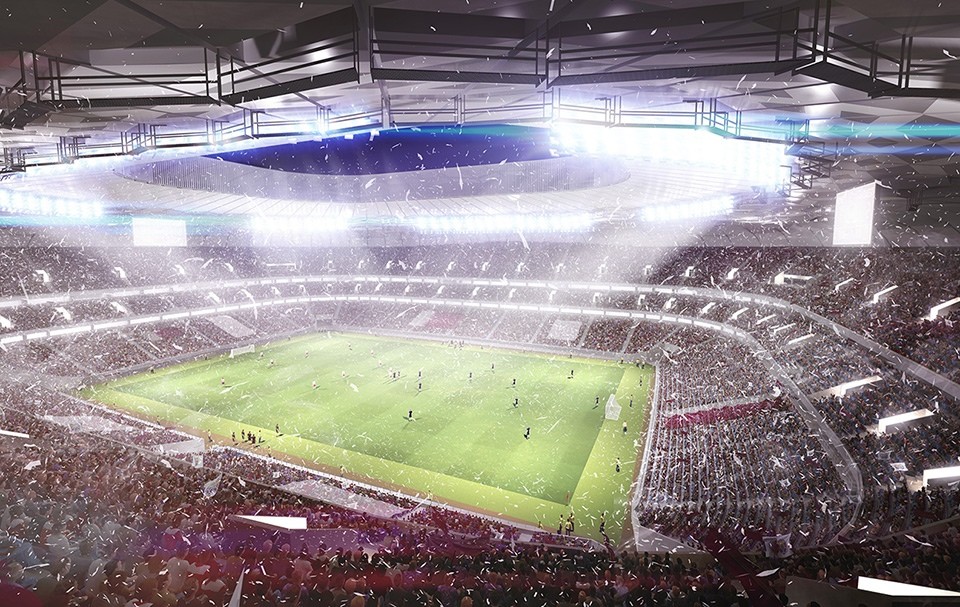Qatar’s latest addition to its 2022 FIFA World Cup stadium portfolio is a RFA Fenwick Iribarren Architects designed geometrical patterned shell that will house 40,000 spectators and will be air-conditioned year-round.
Situated within the Health and Wellness Precinct at Qatar Foundation Education City, the stadium has been proposed as a host venue for the 2022 FIFA World Cup by Qatar Foundation and the Supreme Committee for Delivery & Legacy, to share the game-load with other stadiums such as the tent-like stadium by Dar Al Handasah architects.
The façade is characterised by a series of triangles presented in geometrical patterns, which, according to the developers, will appear to change colour as the sun arcs across the sky.


The colour shifting theme also extends into the interior where translucent panels of illuminated fabric will alter colours and patterns during football matches and other events.
The stadium’s pitch and the spectator stands will be cooled to 24-28 degrees Celsius during competition and according to the project engineers, Arup the energy load for that will be burdened by a host of photovoltaic and solar thermal panels.

The stadium is also designed for partial disassembly and once the world cup is completed it will shrink in capacity from 40,000 spectators to 25,000 thanks to a modular upper seating tier.
The stadium and associated precinct will include health and medical clinics for adults and children, male and female gymnasiums, swimming pools, tennis courts, football pitches, cycling and climbing facilities.
The project is targeting a LEED Gold certification rating and incorporates a variety of additional sustainable design aspects such as green roofs, energy use reduction initiatives and water recycling.
It is expected to be completed in 2018.
Images: Arup

